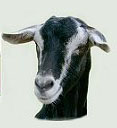|
Getting your first horse or pony
|
Ground Ivy Ground-ivy which is often referred as Alehoof, Creeping Charlie, Catsfoot, Field Balm, Run-away-robin, Gill-over-the-ground and Tunhoof is native to Europe and southwestern Asia. It was introduced into North America and is now very common on most regions other than the Rocky Mountains. The paired leaves and teeth-like edges can identify it. Depending on the season this plant will have blue/purple flowers growing. The stem and roots tend to be brown in color and the leaves will often have a blue tint to them. Ground ivy is very common in grasslands, wooded areas or wastelands but thrives in moist shaded areas. It can tolerate sun very well, which makes it suitable for almost any region. It is often considered an aggressive and invasive weed because it can survive mowing and will grow in thick patches. Ground Ivy is not a weed though; it is actually an herb of the mint family Lamiaceae. It has many medical properties such as treating inflammation of the eyes. Ground ivy has also bee used for colds and coughs. Toxic to horses Ground ivy, whether fresh or dried, is toxic to horses and ponies. This plant is very bitter and most horses will avoid it on their own but if it is mixed in hay bales, which it commonly is, it can poison the animal. Poisoning due to ground ivy is rare since a large amount would have to be consumed and more times than not ground ivy poisoning is not fatal. Like other members of the mint family, ground ivy has volatile, aromatic oil. The chemical constitution is currently unknown. Symptoms If a large amount of ground ivy is consumed the infected animal will slobber, sweat and have a hard time breathing. The horse will often pant like a dog and their pupils will also be dilated.
Poisonous Plants | Horse Health
|
||||
|---|---|---|---|---|---|
The Material contained herein may not be reproduced without the prior written approval of the author. Contents & Graphics Copyright © Horses With Amie (C) 2006-. All Rights Reserved. Our work is not Public Domain. |

